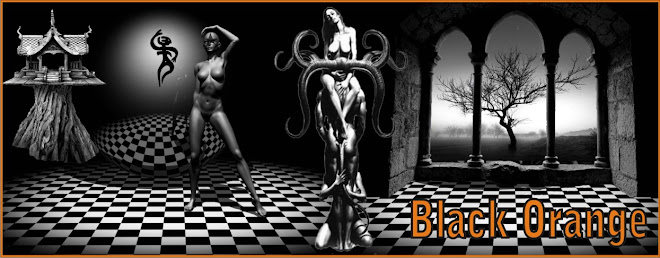The Splendor Solis is one of the most beautiful of illuminated ,
alchemical manuscripts, and was made in the form of a medieval manuscript and illuminated on
vellum, with decorative borders like a book of hours, beautifully painted and heightened with gold. The later copies in London, Kassel, Paris and Nuremberg are equally fine.
The work itself consists of a sequence of 22 elaborate images, set in ornamental borders and niches. The symbolic process shows the classical alchemical death and rebirth of the king, and incorporates a series of seven flasks, each associated with one of the planets. Within the flasks a process is shown involving the transformation of bird and animal symbols into the Queen and King, the white and the red tincture.
This echoes the Pretiosissimum Donum Dei sequence which is probably earlier, dating from the 15th century. Although the style of the Splendor Solis illuminations suggest an earlier date, they are quite clearly of the 16th century.
The Splendor Solis was associated with the legendary Salomon Trismosin, allegedly the teacher of Paracelsus. The Trismosin writings were later published with woodcut illustrations, in the Aureum Vellus, by Guldin Schatz and Kunst-kammer, 1598, which was reprinted a number of times. A French translation, entitled "La Toyson d'or, ou la fleur des thresors" was issued in Paris in 1612 with a number of very fine engravings, some copies of which were hand-coloured.
The original manuscript of these plates is in the British Museum, and dated 1582. Though the earliest version is considered to be at Kupferstichkabinett in the Prussian State Museum in Berlin, and dated 1532-35.
The text of this famous work have been translated by Joscelyn Godwin and printed by Phanes Press.
A Yogi Publications edition also contains a biography of Trismosin, with his quest for and eventual attainment of the Philosopher Stone written in 1498.
The only colored plates ever printed were by James Wasserman's fine work "Art and Symbols of the Occult", Greenwich Editions, London, 1993.
The Virtual Alchemy website also have the 22 color plates with comments, but the pictures here are of high resolution, they will offer much detail for study and appreciation.



The Splendor Solis was associated with the legendary Salomon Trismosin, allegedly the teacher of Paracelsus. The Trismosin writings were later published with woodcut illustrations, in the Aureum Vellus, by Guldin Schatz and Kunst-kammer, 1598, which was reprinted a number of times. A French translation, entitled "La Toyson d'or, ou la fleur des thresors" was issued in Paris in 1612 with a number of very fine engravings, some copies of which were hand-coloured.
The original manuscript of these plates is in the British Museum, and dated 1582. Though the earliest version is considered to be at Kupferstichkabinett in the Prussian State Museum in Berlin, and dated 1532-35.
The text of this famous work have been translated by Joscelyn Godwin and printed by Phanes Press.
A Yogi Publications edition also contains a biography of Trismosin, with his quest for and eventual attainment of the Philosopher Stone written in 1498.
The only colored plates ever printed were by James Wasserman's fine work "Art and Symbols of the Occult", Greenwich Editions, London, 1993.
The Virtual Alchemy website also have the 22 color plates with comments, but the pictures here are of high resolution, they will offer much detail for study and appreciation.



S.L. MacGregor Mathers is credited with an early work on the Splendor Solis, his notes on the obvious Kabbalistic and Arcana Major Tarot implications of 22, not to mentioned the alchemical symbolism, would have proved of interest had they survived.
Ithell Colquhoun writes in the Sword of Wisdom, MacGregor Mathers and the Golden Dawn, G.P. Putnam's Sons, New York, 1975
"Besides Egyptian Symbolism", another book by Mathers which no one seems to have seen is his edition of the Splendor Solis by the fifteenth-century alchemist Salomon Trismosin, reputed occult teacher to Paracelsus.
Edward Garstin valued this work highly and cited it several times in his own alchemical writings, especially the unpublished Alchemical Glossary.
Trismosin was also the author of The Golden Fleece, one of the treasures of the British Museum's manuscript library, its coloured illustrations even rivalling the miniatures of Les Très Riches Heures du Duc de Berry.
Ithell Colquhoun writes in the Sword of Wisdom, MacGregor Mathers and the Golden Dawn, G.P. Putnam's Sons, New York, 1975
"Besides Egyptian Symbolism", another book by Mathers which no one seems to have seen is his edition of the Splendor Solis by the fifteenth-century alchemist Salomon Trismosin, reputed occult teacher to Paracelsus.
Edward Garstin valued this work highly and cited it several times in his own alchemical writings, especially the unpublished Alchemical Glossary.
Trismosin was also the author of The Golden Fleece, one of the treasures of the British Museum's manuscript library, its coloured illustrations even rivalling the miniatures of Les Très Riches Heures du Duc de Berry.
Mathers passed his manuscript to F. L. Gardner, perhaps in part-payment of financial obligations, and Gardner published it about 1907 in the hope of recouping expense on some of Mathers' other work for which he had agreed to be responsible. But he did not let Mathers know what he had done, and the latter (understandably) protested. It must have been a very small edition and copies are scarce, if Ellic Howe has not seen one, who has? Again, there is no trace of it in the British Museum catalogues. Mathers' introduction and notes, if such there were, would be worth reading as his insight into alchemy is scarcely recorded elsewhere and would illuminate the Order's teaching on the subject.





































No comments:
Post a Comment